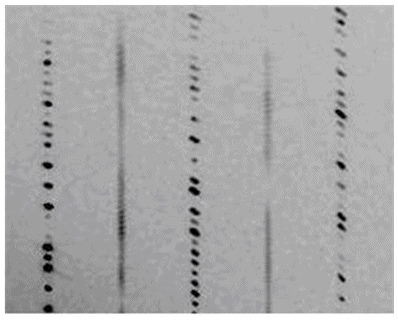The Boundary Between Diffuse Scattering and Modulation
During crystallization a variety of different molecular interactions are at play, and they determine the final structure. These interactions are often competing, and depending on their mutual strengths, this can result in various degrees of order, that in turn can give rise to diffuse scattering or well-defined reflections in the diffraction pattern. It is important to investigate how order– part order –disorder affects the diffraction pattern and how this information can give us vital information concerning packing of molecules. The balance between the interactions is very fine, and can often be changed by external parameters such as temperature or pressure. This can result in a solid state order – disorder transformation, with a transition between diffuse scattering and modulation. It is also possible to disrupt the balance by weakening specific interactions; this can be done by increasing the distance between the interacting parts of the structure. In this way it is possible to determine whether it is long distance interactions or local environment that determines how the molecules pack in the crystal.
